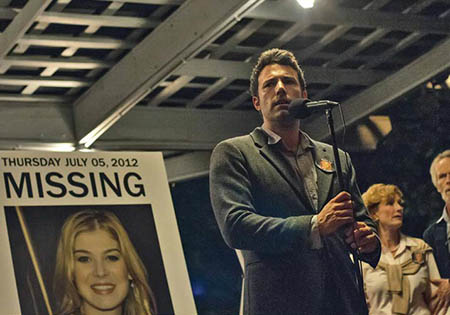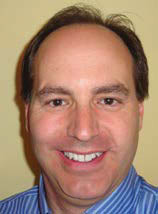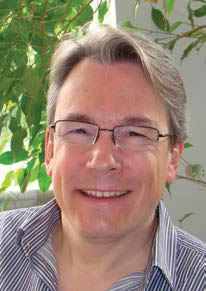State of the Edit, 2015
In this year’s annual “State of the Edit” survey, I asked representatives of most of the major NLE’s about today’s challenges facing editors and the post production community. As usual, their responses were generous and insightful.
ADOBE

“Gone Girl” is the first major feature shot in 6K and was cut in Adobe Premier Pro. Coming off the success of “Gone Girl” as the first major feature shot in 6K and cut in Adobe System’s Premier Pro (using 2K proxies!), Al Mooney, senior product manager for professional video editing at Adobe, is tracking the way post production pros are becoming involved with the final “look-and-feel” of a production’s imagery starting from dailies on the set through to mastering.
“The need for editors to be creative in color and light requires employing sophisticated grading capabilities earlier in post production than ever before,” Mooney said. “Even lower budget shoots can obtain a high-end filmic look thanks to the increased palette of finishing tools now available to editors right from the beginning of the post process.”
AVID

David Colantuoni, Avid The strongest trend David Colantuoni, senior director/product manager for the Artists Suite of Products at Avid Technology, sees editors facing is the growing need for professional editing skills in and of themselves.
“There are so many new delivery channels available that filling their content requirements has called for a renaissance in the need for highly trained editors,” Colantuoni said. “The new business models such as subscription pricing have spread the availability of high-end NLE’s over a wider community. Customers are asking us how to get the myriad of input sources digitized more efficiently, making the availability of background ingest and rendering increasingly valuable to streamline workflows.”
BORIS FX
Now that they have acquired Oscar-winning VFX company Imagineer Systems, Ltd., Boris Yamnitsky, now the CEO of Boris FX/Imagineer, foresees a burgeoning call for “beauty work” effects capabilities since 4K images are four times as unforgiving of facial bumps and blemishes than HD.
“Every human face on the screen can use some cleanup,” he said. “As on-screen talent ages, we often need to apply some skin restoration especially as their appearance changes from one day’s shooting to the next. The key is a call for improved masking capabilities earlier in the editing process so the faces can be automatically tracked from frame to frame. We want to keep the stars’ on-screen image looking as good as they think they are.”
EDITSHARE

EditShare’s Matt Sandford notes a potential new market in virtual reality productions by providing content for such devices as Microsoft’s “HoloLens” hologram glasses. As if reality were not enough to deal with, Matt Sandford, product manager for EditShare’s Lightworks edit system, is seeing a potential trend toward virtual reality productions, citing a recent cinematic VR project finished for New Deal Studios by Jaunt VR in Palo Alto, Calif. We can also note that Facebook plunked down $2 billion for Oculus Rift and Microsoft is buzzing about its transformational “HoloLens” hologram glasses
“These are still very early days, but productions showing 360-degree views are becoming practical thanks to the small size purpose-built high resolution cameras on the market today,” Sandford said. “The editor could insert a section of a clip on the timeline, and then the system would extrapolate a whole wrap-around image to be displayed in 3D space. With multiple sources shooting multiple angles, especially in 4K, this could change the whole way we think about video production.”
GRASS VALLEY
“It’s the wild sources we need to corral,” said Steve Wise, product marketing manager for editing for Montreal-based Grass Valley. “We need to be able to take in video from cell phones, the Web, or flying drones and output the result in the explosion of deliverable formats being demanded today. So we’re seeing that NLEs have to be packed with all the available codecs on both the input and the output side. No matter the source, editors need to be able to get the shots into and out of their systems as quickly as possible. After all, today’s eye witnesses are tomorrow’s cell phone witnesses.”
QUANTEL

Damon Hawkins, Quantel “In a nutshell, resolutions and frame rates are rapidly evolving and we need to upgrade our systems to handle them,” said Damon Hawkins, product manager for Quantel post and broadcast workstations. “After all, there is no SMPTE standard for 60p editing, and edit systems need to be able to track the one/two, one/two frame count so they can cut on the proper frame boundary. Finishing workstations can accomplish this, but it is much more difficult in offline editing.”
To begin with, he said, we need a new standard for 60p timecode. “Add in greater resolutions, higher dynamic range video, the increased color space being implemented by camera manufacturers, and the throughput requirements of 60p are pushing the boundaries of today’s NLE capabilities.”
SONY CREATIVE SOFTWARE
As purveyor of Vegas Pro editing software, Michael Bryant, director of marketing at Sony Creative Software, feels that the advent of new display technologies is going to accelerate the demands put on today’s edit systems.
“Once people start to see the vivid luminosity of high-dynamic range color, editors are going to have to know how to capture the associated metadata and maintain it throughout the post production chain,” Michael said. “The chances are this topic will be a focus of discussion at the NAB Show now that content providers like Netflix have announced 4K streaming. It’s not just the codec, but the information contained in the codec that will make the difference.”
If you are visiting the technological tsunami that will be flooding the Las Vegas Convention Center during the NAB Show, make sure to stop by these vendors’ exhibits to investigate the solutions they will be unveiling to deal with the ever-increasing challenges of digital post production. All of these NLE representatives have been free to pose the questions, now let’s see what answers they can provide.
Jay Ankeney is a freelance editor and post-production consultant based in Los Angeles. Write him at JayAnkeney@mac.com.
Get the TV Tech Newsletter
The professional video industry's #1 source for news, trends and product and tech information. Sign up below.
